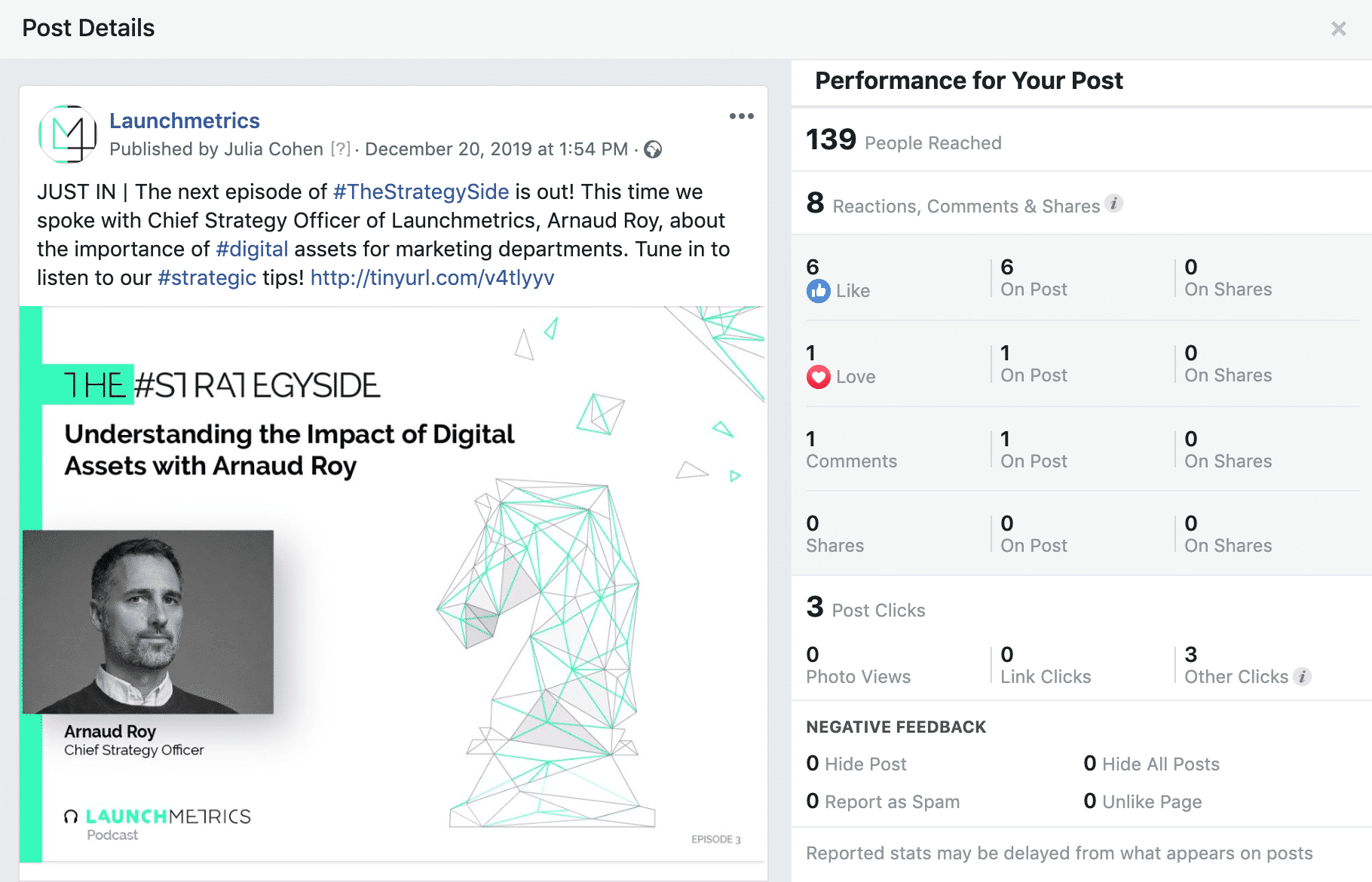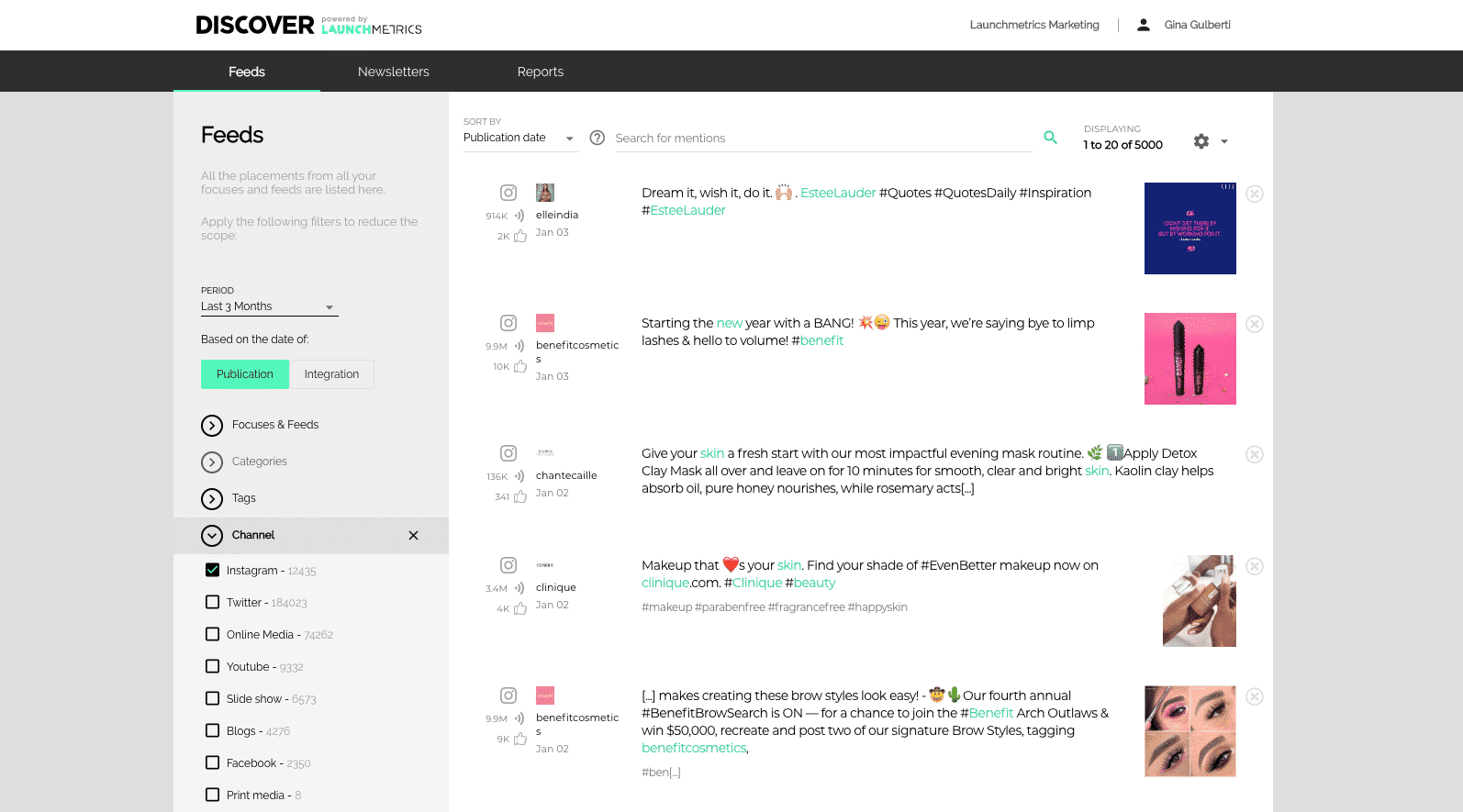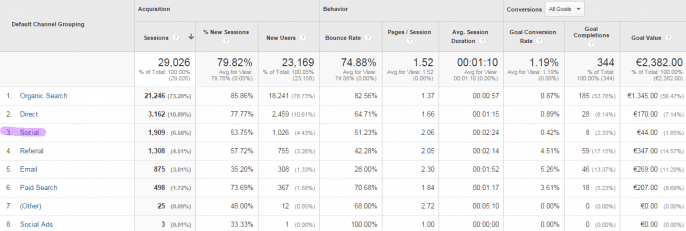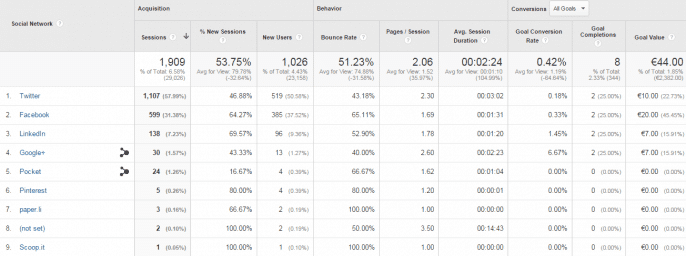One of the most important things when it comes to any brand's online campaign is measuring results. After putting hard work and effort into content, events, and partnerships, it's important to look back and consider your results before you go full steam ahead into the next campaign. Analyzing if you have met your planned objectives is fundamental, so you can understand what you've done well, and what you could improve on.
The real problems arise when it is difficult to set objectives for future campaigns if you are unaware of the ROI on previous activations, and, measuring results can be particularly hard when it comes to social media.
In this post, we’re going to talk about the importance of social analytics and what objectives you can set for your campaigns in order to effectively measure your results. Let's get into it.
In this article you’ll learn…
Why is analytics so important?
“Analytics is the result of analyzing activity with the aim of focusing on result-orientated actions.” Vilma Núñez says, “Knowing the results of your actions allows you to analyze not only if they have worked or not, but they also tell you a lot about your users: what they are like, their interests and so forth. Knowing them will enable you to focus your campaigns correctly and be much more efficient (and effective).”
Before tackling analytics in-depth, it’s important to note that it is not about just observing data and drawing conclusions; we can differentiate between the three types of data analysis:
- Descriptive: this type simply showcases the information provided by the multiple tools we use in our day to day - it only displays what is happening at a given moment in time. Descriptive analytics describes "the use of a range of historical data to draw comparisons."
- Predictive: this type enables us, based on results from previous campaigns and activities, to predict how future campaigns will perform.
- Prescriptive: the most in-depth form of analytics, prescriptive analytics allows us to understand what is happening, and also how to solve problems and make improvements for the future.
The latter type provides real solutions as well as showing us what is happening at any given time. We recommend using prescriptive analytics because, despite being more time consuming, it provides much more accurate results to work from.
Where does social media come in?
Data is king, and as we mentioned above, analytics are crucial for any aspect of your business, but it gets slightly more complicated when we talk about social media analytics. Lacking the clear tools to actually measure the objectives you have set means that analyzing data is sometimes challenging, and often reduced to simply counting the number of followers, fans or engagement on a social media platform.
But this isn’t enough. You need to be aware of what your target audience wants, how they search for it and whether your content satisfies this. Here are some key points to keep in mind:
- You must set clear objectives for your social media strategy.
- You must know what your indicators (KPIs) are in order to measure the results of your actions.
- You should give your objectives a numeric value, known as metrics.
The KPIs you’ll need for your social media analytics
Now that we’ve talked about the importance of analytics, it’s time to get practical and examine the 7 KPIs that are fundamental when it comes to your social media strategy.
1. Distribution of content on social media
Once you have drafted, reviewed and published your content, be it a whitepaper, a blog post or an infographic, it’s time to distribute it. Besides sharing via newsletters, and directly with clients and prospects, in order to generate awareness, most brands distribute content via social networks such as LinkedIn, Instagram, Facebook and more.
Analytics allows us to understand more about:
- Which specific social media platforms are the most suitable when it comes to distributing specific content: LinkedIn might be better when it comes to generating downloads of whitepapers, whilst Instagram may be better when it comes to distributing blog posts or awareness content.
- The profile of your followers on each platform: each platform may have a different demographic, so your followers will differ in their preferences, and how they like to consume content.
- What content is most attractive for each case: for example, if you have designed an infographic, Pinterest may be an ideal distribution channel, but if you want to promote a webinar, YouTube is probably the best channel.
Recommended KPI: the reach of your publications on each social media platform.
2. Number of publications
The more publications you have on social media, the greater the volume of data you will have at your disposal in order to analyze who your users are, and more importantly, what type of content they prefer. Building on this, you can start to focus on outputting the type of content that they enjoy. You can also start to understand the specific content that your target audience favors if you are trying to reach out to new followers.
Increasing the number of publications on social media will enable us to reach a greater audience and therefore increase your brand’s notoriety. However, remember to also focus on the quality of your content, and not just the quantity.
Recommended KPI: the number of publications on social media.
3. Members of your social communities
When we talk about our community on social media, be they fans on Facebook, followers on Instagram, or subscribers on YouTube, we’re not only talking about the number of people but also their 'quality' in terms of our objectives. Your ideal online community should be made up of your target audience, who are interested in the value your brand brings to them.
Knowing whether you have valuable followers will enable you to attain your objectives more effectively since you will be directing your efforts to those who are truly interested in what your brand has to offer.
Recommended KPI: total number of fans and followers on social media.
4. Clicks to links
Clicks on the links you share on your social channels will enable you to know which content is most popular with your users, and therefore, which is the most efficient content for driving traffic to your website. You can also zero-in on which titles and captions are the most 'clickable' so that you can adapt your social media strategy in the future. This way, you will be able to tell which posts you should be sponsoring or 'boosting' in order to attract more of your target audience.

In Facebook's post details, you can specifically view the post clicks.
Recommended KPI: clicks on link shares.
5. Community engagement
When we talk about community engagement on social media we’re talking about comments, shares, likes and saves on Facebook, Instagram, YouTube and LinkedIn and retweets on Twitter.
All of these social media analytics indicate how engaged your community is, enabling you to understand whether the content you are offering is relevant and interesting. The greater the participation of your community, the further the reach of your publications. The Instagram algorithm, for example, favors high engagement levels, as the more comments, saves or likes a post receives, the more people it will be shown to. Also, your followers' followers will be able to see if someone interacts with your post, propelling it to even more potential customers.
You should bear in mind that it is not only important for the community to participate but that it is also important for your brand to respond rapidly to all interactions, in order to keep your followers engaged.
Facebook has taken this very aspect into account lately and has included a feature on brand pages that measures the brand’s response time, a key indicator of the relationship between brands and their followers.
Recommended KPI: community engagement based on likes, shares, comments, retweets, saves, etc.
6. Brand mentions on social media
A good reputation on social media is important, but it’s not always possible. Many brands have suffered from a reputation crisis due to a singular post on social media, in fact, in just one tweet, Kylie Jenner made Snapchat's stock drop by 6%, wiping out $1.3 billion of the company's market value. Our online monitoring tool enables brands to know what is being said about them specifically online. Thanks to this tool we know when brands are being mentioned and why, in what way and in what tone, allowing them to combat a potential reputation crisis by putting solutions in place at an earlier stage.

You can also understand the quality of the mentions you receive, by tracking the MIV® of these mentions. More on that, here.
Recommended KPI: number of brand mentions on social media.
7. Web visits from social channels
Whilst publications on social media show us a snapshot of our user interaction and mentions, you should still be focusing on your objective to drive traffic to your site. The social media platforms you use are there to drive traffic and boost notoriety, as well as encourage users to buy your product, service, request more information, etc.
Google Analytics is the best way to track this data. You can click through to the social acquisition tab, and analyze which channels are bringing you the post traffic, on which posts.


Recommended KPI: web traffic from social media
These 7 KPIs are critical when it comes to your social media analytics so that you can measure and improve your campaigns. Whether you add more KPIs to your strategy, you should always consider these 7 as your basic indicators of performance online.


jac koh
Hi Irene,
thanks for the breakdown and explanation.
It helps a lot for a beginner like me to start somewhere else.
Rosanna Ryan
Hi Jac, we're glad you found it useful! Thank you for your comment.
warida ali
Thanks lot, I learn many things regarding the social media KPIs
Julia Cohen
Thank you for your feedback!